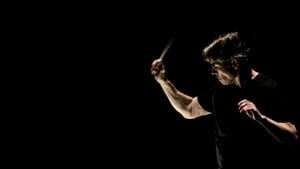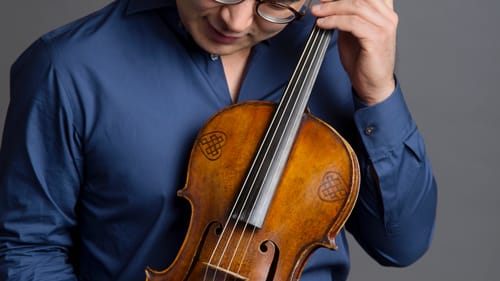Stay in the Loop
BSR publishes on a weekly schedule, with an email newsletter every Wednesday and Thursday morning. There’s no paywall, and subscribing is always free.
Miraculous music
The Philadelphia Orchestra presents ‘A Space Odyssey’ with Esa-Pekka Salonen

Esa-Pekka Salonen defines contemporary classical-music cool. How many other conductors have starred in an Apple ad campaign? The 60-year-old Finnish maestro, who moonlights as a highly acclaimed composer, proved his fame is no fluke as he led a dynamic series of subscription concerts with the Philadelphia Orchestra this week, including a thrilling and distinguished rendering of Also Sprach Zarathustra.
The Orchestra dubbed the program A Space Odyssey — a reference to its musical centerpiece, Richard Strauss’s tone poem Also Spach Zarathustra, which features prominently in Stanley Kubrick’s groundbreaking 1968 film. The combination of familiarity and Salonen’s star status accounted for an audience that was more crowded than usual on a Thursday night. Those in attendance certainly got their money’s worth.
Beyond the first minute
Zarathustra contains perhaps the most exciting minute in all of classical music — the opening fanfare, “Dawn,” which Kubrick used as his movie’s main theme. Watching the audience light up in recognition at the opening trumpet quartet and the thundering organ offered as much pleasure as the music itself. Salonen handled the distinctive introduction with appropriate brio, building big waves of sound without sacrificing taste. This was an orchestra concert, after all, not a college football game.
Of course, about a half-hour of music follows that familiar curtain raiser, and it falls to the conductor to keep things moving after dispatching the part the audience knows. Salonen, who usually favors expansive, almost languorous tempos, instead kept things moving at a steady clip. He cut through Strauss’s thick orchestrations to produce a lean, muscular, and recognizably Philadelphian sound.
How did he manage to get the entire violin section, brimming with just about every player shoved on stage, to sound like a single instrument? I don’t know the answer, but the results took my breath away. And how did he inspire concertmaster David Kim — an artist I usually associate with technique and refinement more than unbridled passion — to play so lustily in “The Grave-Song”? Salonen’s intelligence and spirit clearly inspires his musicians to give their all.
The work’s conclusion met with an ovation one might expect to hear at a Springsteen concert, not a performance of Strauss. The musicians and their maestro richly deserved the prolonged applause.
Staying for the second half
To my surprise and delight, the audience noticeably didn’t thin out after intermission, when the program moved into more esoteric territory. Bartók’s Viola Concerto provided a rare moment in the spotlight for principal violist Choong-Jin Chang, and he matched Salonen’s level of virtuosity and excitement.

William Primrose commissioned the concerto in 1945, when he was principal violist of the NBC Symphony Orchestra, but Bartók died after completing only the preliminary outline. His former pupil Tibor Serly completed the piece in 1949, and Primrose himself served as soloist when the Orchestra performed it for the first time the following year.
The viola is usually a supporting player in the orchestral ecosystem — the steady alto to the violin’s star soprano. Yet as he showed earlier this season in Nico Muhly’s Liar, Suite from Marnie, Chang can solo with the best of them when called upon. He especially let loose in the concerto’s concluding Allegro vivace, which draws on the Hungarian folk themes so central to Bartók’s musical language. He played at breakneck speed, but it never seemed like a dexterity test — he fully inhabited every moment.
The evening ended with more Bartók — the suite from The Miraculous Mandarin, heard here for the first time in over a decade. Salonen led a propulsive reading that drew out every nuance and psychological tremor in this thorny, ahead-of-its-time score. Ricardo Morales proved a standout in the piece’s restless clarinet solo lines.
The San Francisco Symphony recently announced that Salonen would become its music director in 2020. Music lovers in the Bay Area should count themselves lucky. The rest of us should hope his schedule allows for regular visits as a guest conductor.
What, When, Where
A Space Odyssey. Richard Strauss, Also Sprach Zarathustra, Op. 30. Béla Bartók, Viola Concerto and Suite from The Miraculous Mountain. Esa-Pekka Salonen, conductor. Choong-Jin Chang, viola. The Philadelphia Orchestra. February 14 through 16, 2019, at the Kimmel Center’s Verizon Hall, 300 S. Broad Street, Philadelphia. (215) 893-1999 or philorch.org.
Sign up for our newsletter
All of the week's new articles, all in one place. Sign up for the free weekly BSR newsletters, and don't miss a conversation.

 Cameron Kelsall
Cameron Kelsall